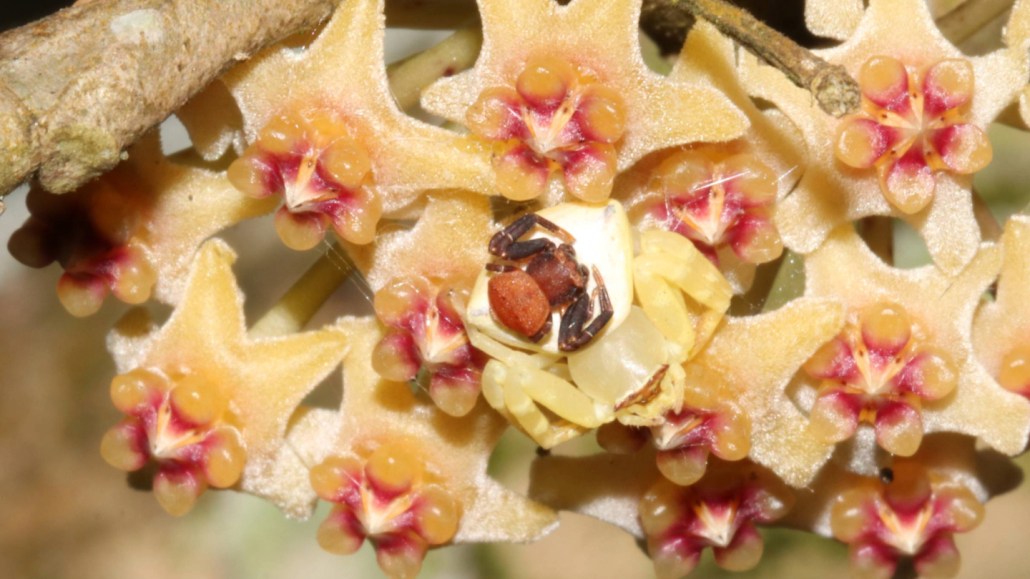
This male crab spider sits on the top of a larger female, perhaps mimicking the flower they are on. The female spider blends in with petals while the male looks a lot like the flower’s pistil and stamens.
Shi-Mao Wu/ Yunnan University

This male crab spider sits on the top of a larger female, perhaps mimicking the flower they are on. The female spider blends in with petals while the male looks a lot like the flower’s pistil and stamens.
Shi-Mao Wu/ Yunnan University